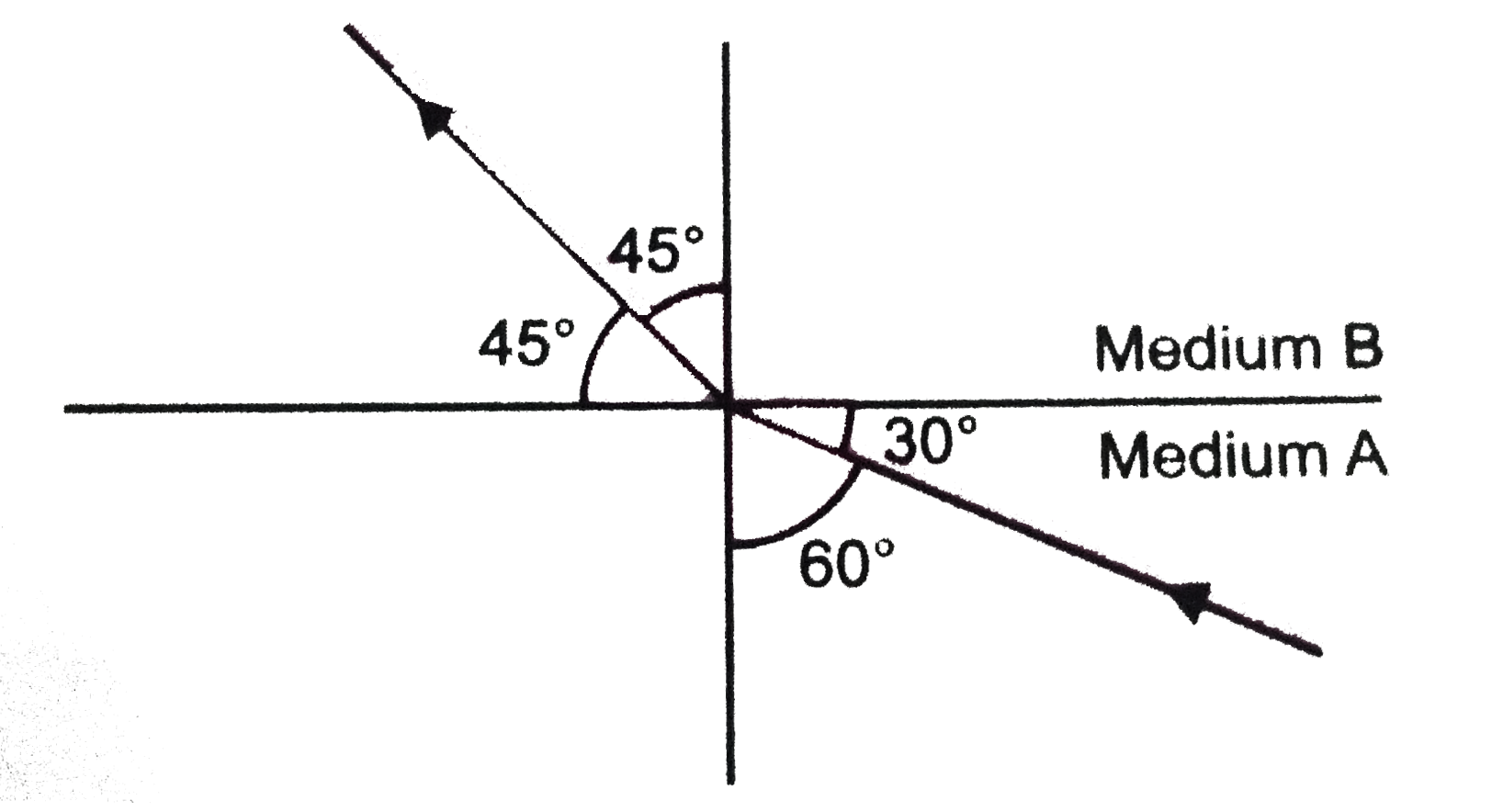When a ray of light travels perpendicular to the surface of separation of the two mediums, there is ............... (maximum/no) refraction.
To solve the question, "When a ray of light travels perpendicular to the surface of separation of the two mediums, there is ............... (maximum/no) refraction," we can follow these steps:
1. Identify the Situation:
- We have two different mediums (let's call them Medium 1 and Medium 2) separated by a surface. A ray of light is traveling perpendicular to this surface.
2. Understanding the Angle of Incidence:
- When light travels perpendicular to the surface, the angle of incidence (denoted as r1) is 0 degrees. This means the ray is hitting the surface straight on.
3. Applying Snell's Law:
- Snell's Law states that μ1sin(r1)=μ2sin(r2), where μ1 and μ2 are the refractive indices of Medium 1 and Medium 2, respectively, and r2 is the angle of refraction.
- Since r1=0, we can substitute this into Snell's Law:
μ1sin(0)=μ2sin(r2)
- The sine of 0 degrees is 0, so this simplifies to:
0=μ2sin(r2)
4. Conclusion About the Angle of Refraction:
- For the equation 0=μ2sin(r2) to hold true, sin(r2) must also be 0. This means that r2 must also be 0 degrees.
5. Final Outcome:
- Since both the angle of incidence and the angle of refraction are 0 degrees, the ray of light continues in a straight line without bending. Therefore, there is no refraction occurring when the ray of light travels perpendicular to the surface of separation.
Answer:
When a ray of light travels perpendicular to the surface of separation of the two mediums, there is no refraction.
---
- We have two different mediums (let's call them Medium 1 and Medium 2) separated by a surface. A ray of light is traveling perpendicular to this surface.
- When light travels perpendicular to the surface, the angle of incidence (denoted as r1) is 0 degrees. This means the ray is hitting the surface straight on.
- Snell's Law states that μ1sin(r1)=μ2sin(r2), where μ1 and μ2 are the refractive indices of Medium 1 and Medium 2, respectively, and r2 is the angle of refraction.
- Since r1=0, we can substitute this into Snell's Law:
μ1sin(0)=μ2sin(r2)
- The sine of 0 degrees is 0, so this simplifies to:
0=μ2sin(r2)
- For the equation 0=μ2sin(r2) to hold true, sin(r2) must also be 0. This means that r2 must also be 0 degrees.
- Since both the angle of incidence and the angle of refraction are 0 degrees, the ray of light continues in a straight line without bending. Therefore, there is no refraction occurring when the ray of light travels perpendicular to the surface of separation.
When a ray of light travels perpendicular to the surface of separation of the two mediums, there is no refraction.
Similar Questions
Knowledge Check
When a ray of light from air enters a denser medium, it :
Abends away from the normalBbends towards the normalCgoes undeviatedDis reflected back
A ray of light travels from an optically denser to rarer medium. The critical angle of the two media is C. The maximum possible deviation of the ray will be
View SolutionThe ray of light after changing its direction in the second medium after refraction is called ................... (reflected ray/refracted ray).
View SolutionWhen a ray of light travels obliquely from a rarer medium to a denser medium, it bends away from the normal.
View SolutionWhen a ray of ordinary light is incident on the surface of separation of two media at polarizing angle, show with the help of a labelled diagram that reflected ray and the refracted ray are mutually perpendicular to each other.
View SolutionFigure shows a ray of light as it travels from medium A to medium B. Refractive index of the medium B relative to medium A is

View Solution(a) State Snell's law of refraction of light.
(b) A transparent medium A floats on another transparent medium B. When a ray of light travels obliquely from A into B, the refracted ray bends away from from the normal. Which of these two media A or B are optically denser and why ?
View SolutionWhat is the cause of refraction of light when it passes from one medium to another ?
View Solution
